OPSIM WAF 
OPSIM implements Water Accounting Framework (WAF) capabilities for the operational efficiency and performance reporting of a modelled water management system. This is undertaken through the assignment of water quality based categories to the various inflow streams to the tasks. Assessment of operational efficiencies is made by tracking water category flow volumes through the course of simulation. Reporting includes comprehensive account of all water inventories entering, leaving and retained within each task of the water management system under assessment.
OPSIM's implementation of the WAF is in alignment with the framework for the Global Reporting Initiative (GRI, Amsterdam 2010) as applied by the Mineral Council of Australia (MCA, 2014).
Concepts:
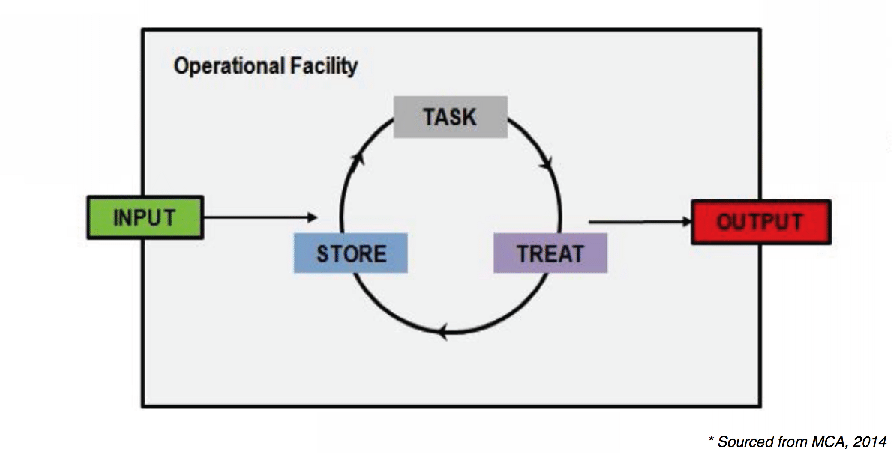
The overall WAF is built around a conceptual operational simulation model of a site's water system which describes the flow of water into (Input) a site, its Tasks, Treatment, Storage, and eventual outflow back to the receiving environment (Output). The components of this generic model (the Operational Model) are diagrammatically portrayed on the following figure.
OPSIM model nodes that represent Tasks, Inputs and Outputs are defined by the User.
The WAF Input-Output Statement is based on assigned Water Quality Category for all Input and Output Element items of a site's water management system. Under the WAF, a Water Status is assigned to the inputs of Tasks for which a Statement of Operational Efficiencies is to be produced.
Features:

Simple application to existing OPSIM models
WAF is fully integrated into OPSIM, providing rapid and reliable application to any OPSIM model, both new and existing alike. Furthermore, WAF system definitions and analysis may be deactivated at any time without loss of parameter settings. This means that WAF analysis features and reporting can be turned off when not required so that other water management activities may be undertaken using the OPSIM model without distraction.
Setup of WAF involves the assignment of classification parameters to "Elements" and "Tasks". Elements are used to define system Input and Outputs, for which "Water Quality Category" definitions are required. All Storage, Source and Sink type nodes are implicitly classified as Elements. Activation of Elements is automatically done when Water Quality Categories are assigned to the node. Under WAF, operational efficiencies are calculated for all defined "Tasks". Activation of a node as a Task is done by assigning water Categories to the node's Input flow stream/s. Setup is complete when all Elements and Tasks are defined.
WAF reporting in OPSIM may be undertaken over any historical period. Calculations may be undertaken using metered data or simulated operation when metered data is not available.
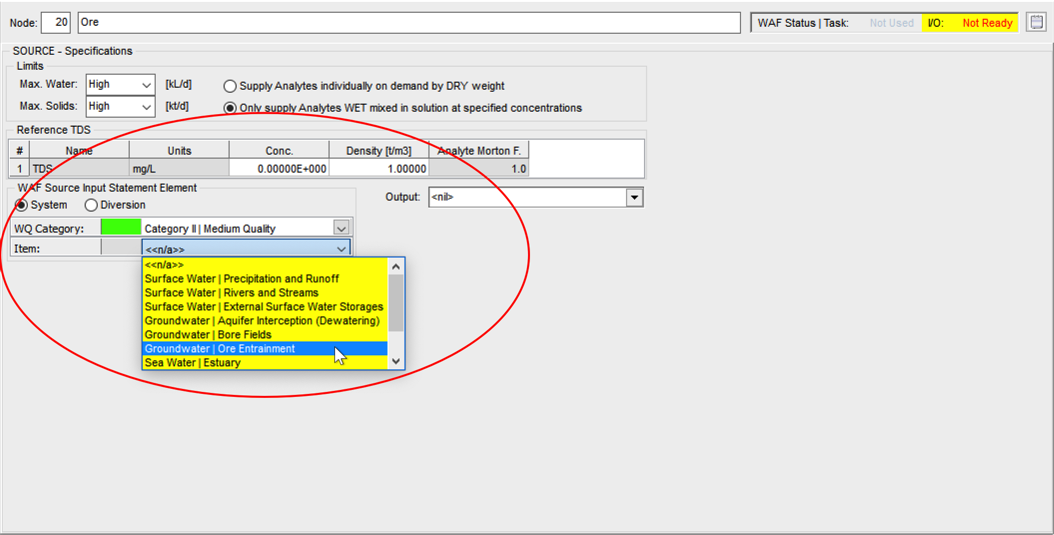
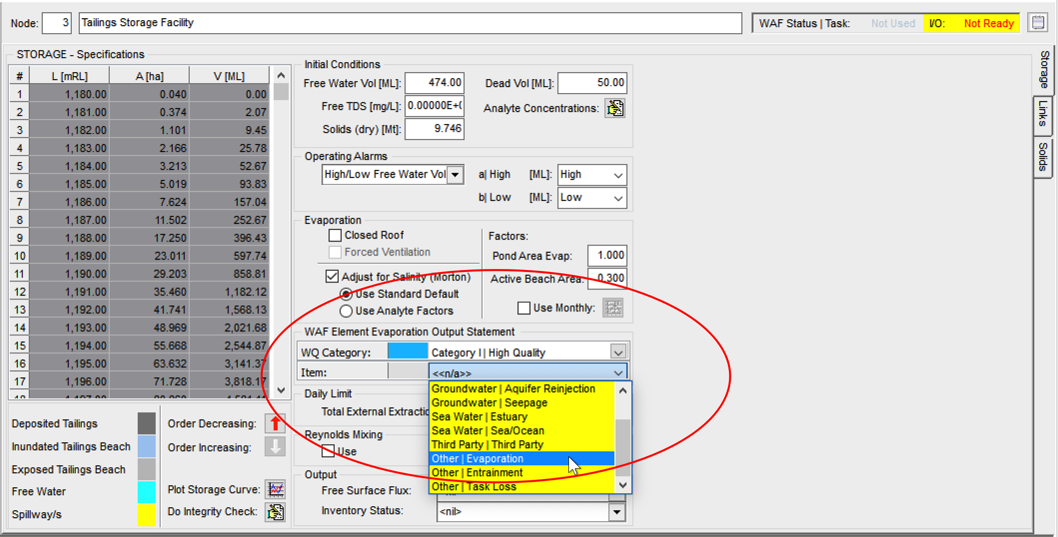
Input and Output
Water Status assignments for Input or Output Element flow streams of a node are defined using drop-down menus. The available menu selections are dependent on OPSIM node type.
Assignments may be made within each node's data panel, or using the summary WAF Element Schedule.
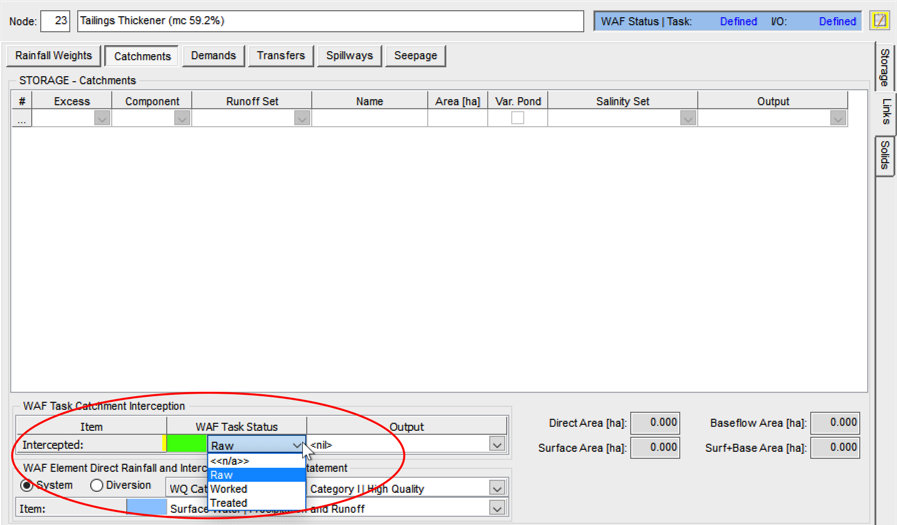
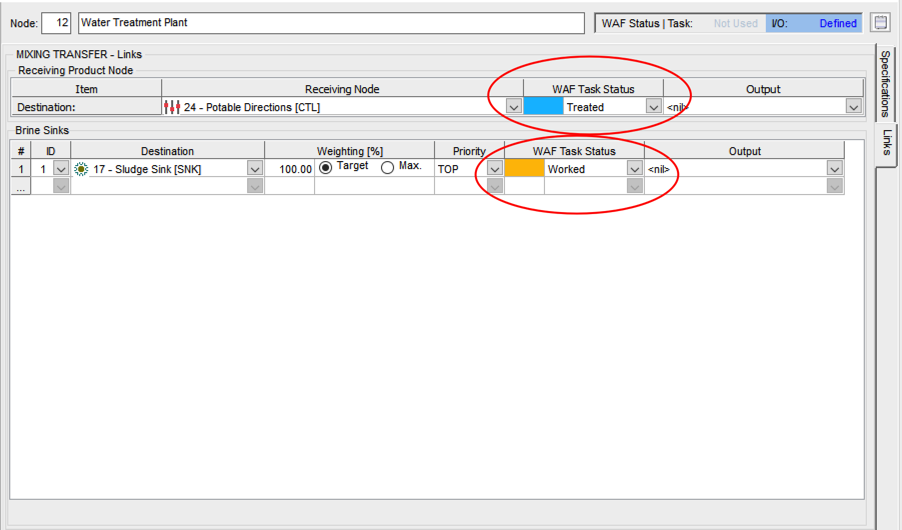
Efficiency Calculation
Status assignments need to be made for all Input flow streams into those nodes for which WAF Tasks efficiencies are to be reported. Efficiencies are calculated for each Status Category type (e.g. Raw, Worked or Treated).
Status assignments may be made within each node's data panel, or using the summary WAF Task Schedule.


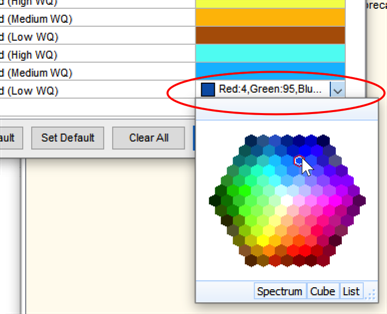
User Customisation
All WAF Element and Task status categories may be fully customised away from the defaults provided. Applied category definitions are saved within each OPSIM model's data set, with defaults (also customisable) saved within User Preferences.
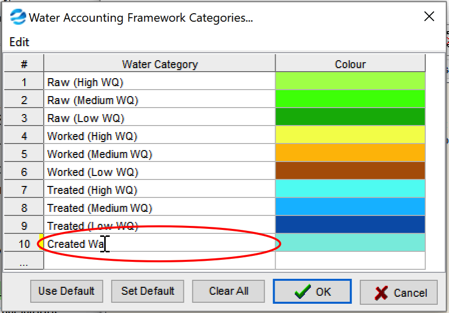
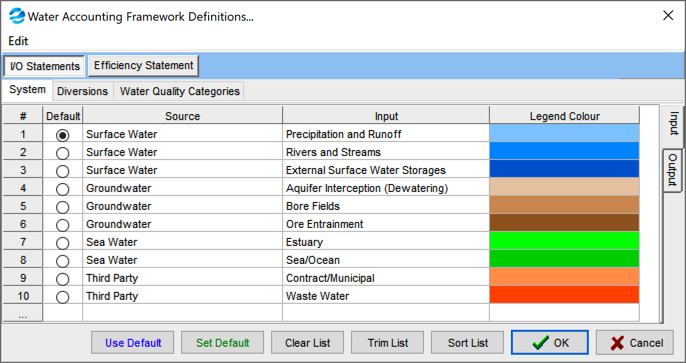
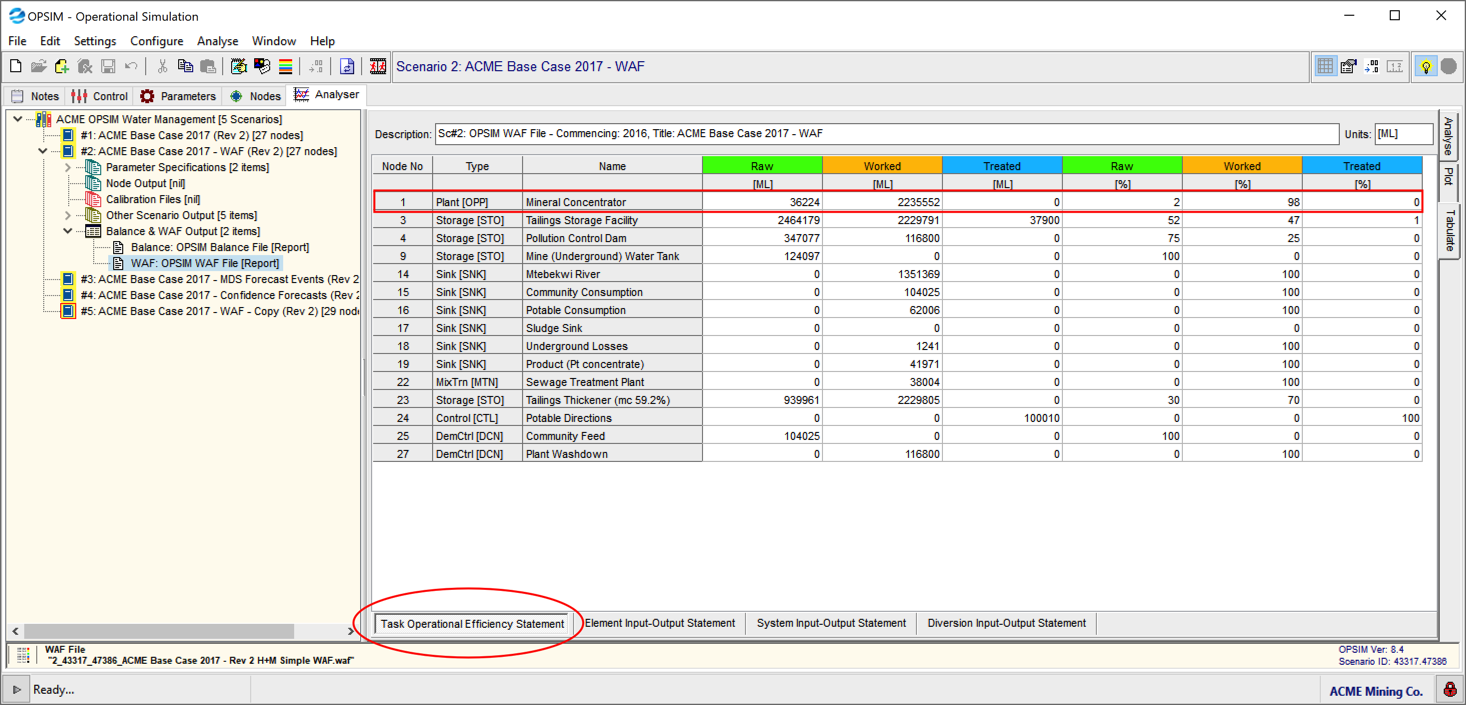
Reporting
OPSIM reporting aligns with Water Accounting Framework requirements for Operational Efficiencies calculation.Two report types are produced whenever a simulation is undertaken (WAF mode needs to have been activated): WAF Statement of Operational Efficiencies: Detailed Water Status breakdowns for the inflows into each active Task node, including associated Operational Efficiencies (%) WAF Input-Output Statements: Water Quality Category balance of the Operational Model, including associated proportions (%), for All Elements , System Inputs & Outputs, and Diversion Inputs & Outputs

The report includes the following tracking information: Total inflow volume for each defined Water Status Category Percentage of the total inflow volume for each defined Water Status Category This information may be directly applied for water Reuse and Recycling Efficiency reporting.
Input-Output Statements are provided for each WAF Element and the overall WAF System.